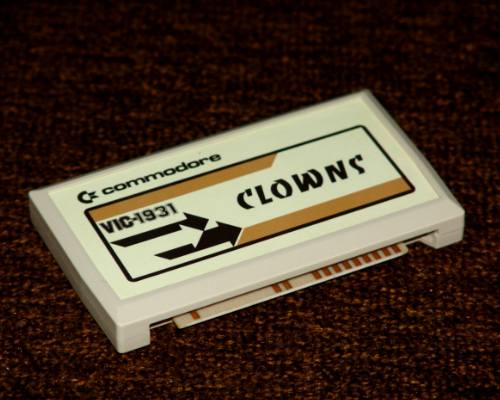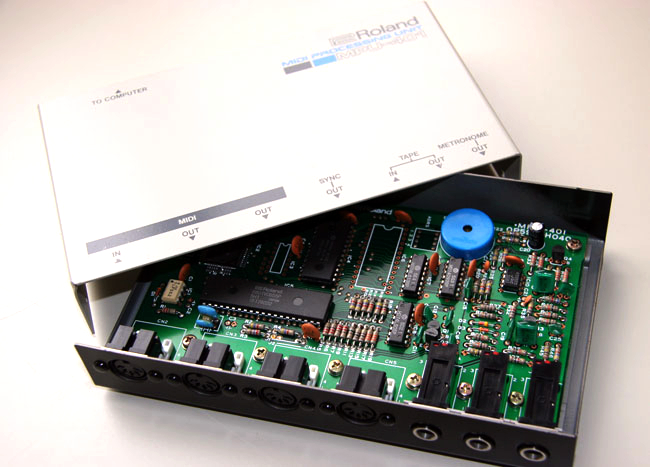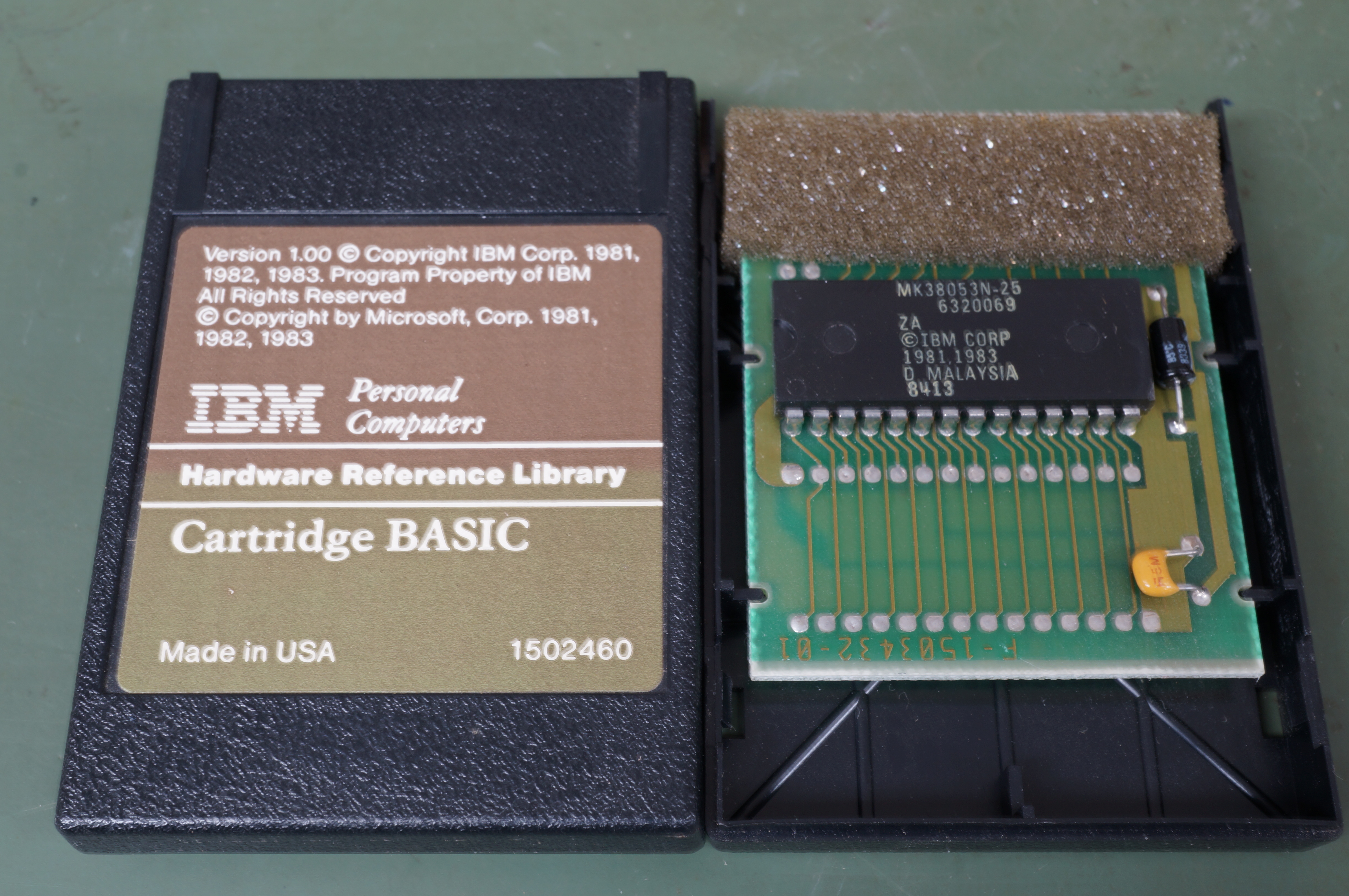|
Game Port
The game port is a device port that was found on IBM PC compatible and other computer systems throughout the 1980s and 1990s. It was the traditional connector for joystick input, and occasionally MIDI devices, until made obsolete by USB in the late 1990s. Originally located on a dedicated Game Control Adapter expansion card, the game port was later integrated with PC sound cards, and still later on the PC's motherboard. During the transition to USB, many input devices used the game port and a USB adapter dongle was included for systems without a game port. History The game port first appeared during the initial launch of the original IBM PC in 1981, in the form of an optional US$55 expansion card known as the Game Control Adapter. The design allowed for four analog axes and four buttons on one port, allowing two joysticks or four paddles to be connected via a special "Y-splitter" cable. At the time there was no industry standard for controller ports, although the Atari joy ... [...More Info...] [...Related Items...] OR: [Wikipedia] [Google] [Baidu] |
Da-15 Port
The D-subminiature or D-sub is a common type of electrical connector. They are named for their characteristic D-shaped metal shield. When they were introduced, D-subs were among the smallest connectors used on computer systems. Description, nomenclature, and variants A D-sub contains two or more parallel rows of pins or sockets usually surrounded by a D-shaped metal shield that provides mechanical support, ensures correct orientation, and may screen against electromagnetic interference. D-sub connectors have gender: parts with pin contacts are called ''male connectors'' or ''plugs'', while those with socket contacts are called ''female connectors'' or ''sockets''. The socket's shield fits tightly inside the plug's shield. Panel mounted connectors usually have #4-40 UNC (as designated with the Unified Thread Standard) jackscrews that accept screws on the cable end connector cover that are used for locking the connectors together and offering mechanical strain relief, and can ... [...More Info...] [...Related Items...] OR: [Wikipedia] [Google] [Baidu] |
VIC-20
The VIC-20 (known as the VC-20 in Germany and the VIC-1001 in Japan) is an 8-bit home computer that was sold by Commodore Business Machines. The VIC-20 was announced in 1980, roughly three years after Commodore's first personal computer, the PET. The VIC-20 was the first computer of any description to sell one million units. It was described as "one of the first anti-spectatorial, non-esoteric computers by design...no longer relegated to hobbyist/enthusiasts or those with money, the computer Commodore developed was the computer of the future." The VIC-20 was called ''VC-20'' in Germany because the pronunciation of ''VIC'' with a German accent sounds like the German expletives "fick" or "wichsen". The term ''VC'' was marketed as though it were an abbreviation of ''VolksComputer'' ("people's computer," similar to Volkswagen and Volksempfänger). History Origin and marketing The VIC-20 was intended to be more economical than the PET computer. It was equipped with 5 KB of st ... [...More Info...] [...Related Items...] OR: [Wikipedia] [Google] [Baidu] |
MPU-401
The MPU-401, where ''MPU'' stands for MIDI Processing Unit, is an important but now obsolete interface for connecting MIDI-equipped electronic music hardware to personal computers. It was designed by Roland Corporation, which also co-authored the MIDI standard. Design Released around 1984, the original MPU-401 was an external breakout box providing MIDI IN/MIDI OUT/MIDI THRU/TAPE IN/TAPE OUT/MIDI SYNC connectors, for use with a separately-sold interface card/cartridge ("MPU-401 interface kit") inserted into a computer system. For this setup, the following "interface kits" were made: * MIF-APL: For the Apple II. * MIF-C64: For the Commodore 64. * MIF-FM7: For the Fujitsu FM7. * MIF-IPC: For the IBM PC/IBM XT. It turned out not to work reliably with 286 and faster processors. Early versions of the actual PCB had IF-MIDI/IBM as a silk screen. * MIF-IPC-A: For the IBM AT, works with PC and XT as well. * Xanadu MUSICOM IFM-PC: For the IBM PC / IBM XT / IBM AT. This was a third party ... [...More Info...] [...Related Items...] OR: [Wikipedia] [Google] [Baidu] |
Serial Bus
In telecommunication and data transmission, serial communication is the process of sending data one bit at a time, sequentially, over a communication channel or computer bus. This is in contrast to parallel communication, where several bits are sent as a whole, on a link with several parallel channels. Serial communication is used for all long-haul communication and most computer networks, where the cost of cable and synchronization difficulties make parallel communication impractical. Serial computer buses are becoming more common even at shorter distances, as improved signal integrity and transmission speeds in newer serial technologies have begun to outweigh the parallel bus's advantage of simplicity (no need for serializer and deserializer, or SerDes) and to outstrip its disadvantages (clock skew, interconnect density). The migration from PCI to PCI Express is an example. Cables Many serial communication systems were originally designed to transfer data over relatively la ... [...More Info...] [...Related Items...] OR: [Wikipedia] [Google] [Baidu] |
Creative Labs
Creative Technology Ltd. is a Singaporean multinational technology company headquartered with overseas offices in Shanghai, Tokyo, Dublin, and Silicon Valley (where in the US it is known as Creative Labs). The principal activities of the company and its subsidiaries consist of the design, manufacture and distribution of digitized sound and video boards, computers and related multimedia and personal digital entertainment products. It also partners with mainboard manufacturers and laptop brands to embed its Sound Blaster technology on their products. History 1981–1996 Creative Technology was founded in 1981 by childhood friends and Ngee Ann Polytechnic schoolmates Sim Wong Hoo and Ng Kai Wa. Originally a computer repair shop in Pearl's Centre in Chinatown, the company eventually developed an add-on memory board for the Apple II computer. Later, Creative spent $500,000 developing the Cubic CT, an IBM-compatible PC adapted for the Chinese language and featuring multimedia ... [...More Info...] [...Related Items...] OR: [Wikipedia] [Google] [Baidu] |
Sound Blaster
Sound Blaster is a family of sound cards designed by Singaporean technology company Creative Technology (known in the US as Creative Labs). Sound Blaster sound cards were the de facto standard for consumer audio on the IBM PC compatible system platform, until the widespread transition to ''Microsoft'' Windows 95, which standardized the programming interface at application level (eliminating the importance of backward compatibility with Sound Blaster), and the evolution in PC design led to onboard audio electronics, which commoditized PC audio functionality. By 1995, Sound Blaster cards had sold over 15 million units worldwide and accounted for seven out of ten sound card sales. Creative Music System and Game Blaster Creative Music System The history of Creative sound cards started with the release of the Creative Music System ("C/MS") CT-1300 board in August 1987. It contained two Philips SAA1099 integrated circuits, which, together, provided 12 channels of square-wave "bee-i ... [...More Info...] [...Related Items...] OR: [Wikipedia] [Google] [Baidu] |
Motherboard
A motherboard (also called mainboard, main circuit board, mb, mboard, backplane board, base board, system board, logic board (only in Apple computers) or mobo) is the main printed circuit board (PCB) in general-purpose computers and other expandable systems. It holds and allows communication between many of the crucial electronic components of a system, such as the central processing unit (CPU) and memory, and provides connectors for other peripherals. Unlike a backplane, a motherboard usually contains significant sub-systems, such as the central processor, the chipset's input/output and memory controllers, interface connectors, and other components integrated for general use. ''Motherboard'' means specifically a PCB with expansion capabilities. As the name suggests, this board is often referred to as the "mother" of all components attached to it, which often include peripherals, interface cards, and daughterboards: sound cards, video cards, network cards, host bus adapters, TV t ... [...More Info...] [...Related Items...] OR: [Wikipedia] [Google] [Baidu] |
IBM PCjr
The IBM PCjr (pronounced "PC junior") was a home computer produced and marketed by IBM from March 1984 to May 1985, intended as a lower-cost variant of the IBM PC with hardware capabilities better suited for video games, in order to compete more directly with other home computers such as the Apple II and Commodore 64. It retained the IBM PC's 8088 CPU and BIOS interface, but provided enhanced graphics and sound, ROM cartridge slots, built-in joystick ports, and an infrared wireless keyboard. The PCjr supported expansion via "sidecar" modules, which could be attached to the side of the unit. Despite widespread anticipation, the PCjr was ultimately unsuccessful in the market. It was only partially IBM compatible, limiting support for IBM's software library, its chiclet keyboard was widely criticized for its poor quality, expandability was limited, and it was initially offered with a maximum of of RAM, insufficient for many PC programs. Models The PCjr came in two models: ... [...More Info...] [...Related Items...] OR: [Wikipedia] [Google] [Baidu] |
Creative Computing
''Creative Computing'' was one of the earliest magazines covering the microcomputer revolution. Published from October 1974 until December 1985, the magazine covered the spectrum of hobbyist/home/personal computing in a more accessible format than the rather technically oriented ''Byte (magazine), Byte''. The magazine was created to cover educational-related topics. Early issues include articles on the use of computers in the classroom, various simple programs like madlibs and various programming challenges, mostly in BASIC programming language, BASIC. By the late 1970s, it had moved towards more general coverage as the microcomputer market emerged. Hardware coverage became more common, but type-in programs remained common into the early 1980s. The company published several books, the most successful being ''BASIC Computer Games'', the first million-selling computer book. Their ''Best of Creative Computing'' collections were also popular. ''Creative Computing'' also published so ... [...More Info...] [...Related Items...] OR: [Wikipedia] [Google] [Baidu] |
Tandy Color Computer
The RadioShack TRS-80 Color Computer, later marketed as the Tandy Color Computer and sometimes nicknamed the CoCo, is a line of home computers developed and sold by Tandy Corporation. Despite sharing a name with the earlier TRS-80, the Color Computer is a completely different, incompatible system and a radical departure in design and compatibility with its Motorola 6809E processor rather than the Zilog Z80 earlier models were built around. The Tandy Color Computer line started in 1980 with what is now called the Color Computer 1. It was followed by the Color Computer 2 in 1983, then the Color Computer 3 in 1986. All three models maintain a high level of software and hardware compatibility, with few programs written for an older model being unable to run on the newer ones. The Color Computer 3 was discontinued in 1991. All Color Computer models shipped with Color BASIC, an implementation of Microsoft BASIC, in ROM. Variants of the OS-9 multitasking operating system were availabl ... [...More Info...] [...Related Items...] OR: [Wikipedia] [Google] [Baidu] |
BBC Micro
The British Broadcasting Corporation Microcomputer System, or BBC Micro, is a series of microcomputers and associated peripherals designed and built by Acorn Computers in the 1980s for the BBC Computer Literacy Project. Designed with an emphasis on education, it was notable for its ruggedness, expandability, and the quality of its operating system. An accompanying 1982 television series, ''The Computer Programme'', featuring Chris Serle learning to use the machine, was broadcast on BBC2. After the Literacy Project's call for bids for a computer to accompany the TV programmes and literature, Acorn won the contract with the ''Proton'', a successor of its Atom computer prototyped at short notice. Renamed the BBC Micro, the system was adopted by most schools in the United Kingdom, changing Acorn's fortunes. It was also successful as a home computer in the UK, despite its high cost. Acorn later employed the machine to simulate and develop the ARM architecture. While nine models ... [...More Info...] [...Related Items...] OR: [Wikipedia] [Google] [Baidu] |
Apple II
The Apple II (stylized as ) is an 8-bit home computer and one of the world's first highly successful mass-produced microcomputer products. It was designed primarily by Steve Wozniak; Jerry Manock developed the design of Apple II's foam-molded plastic case, Rod Holt developed the switching power supply, while Steve Jobs's role in the design of the computer was limited to overseeing Jerry Manock's work on the plastic case. It was introduced by Jobs and Wozniak at the 1977 West Coast Computer Faire, and marks Apple's first launch of a personal computer aimed at a consumer market—branded toward American households rather than businessmen or computer hobbyists. ''Byte'' magazine referred to the Apple II, Commodore PET 2001, and TRS-80 as the "1977 Trinity". As the Apple II had the defining feature of being able to display color graphics, the Apple logo was redesigned to have a spectrum of colors. The Apple II is the first model in the Apple II series, followed by Apple ... [...More Info...] [...Related Items...] OR: [Wikipedia] [Google] [Baidu] |







